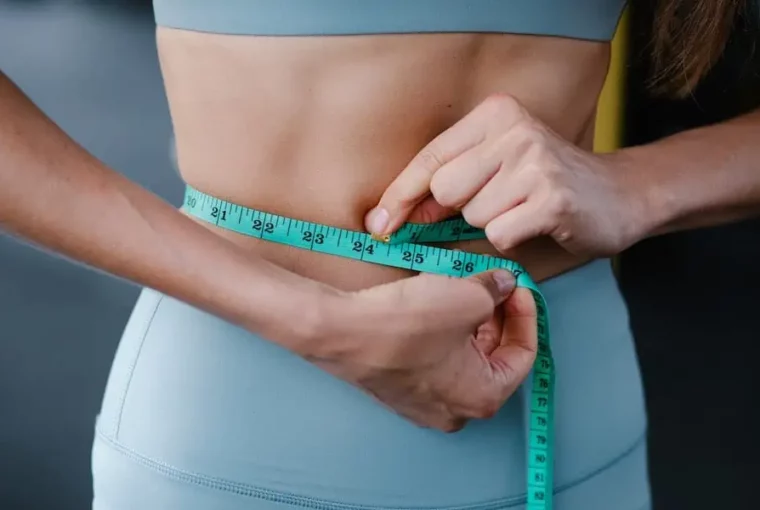Here’s an unexpected (and very welcome) twist: you may also use mindfulness practices to enhance your physical health. The same activities that promote serenity and tranquility may also be used to achieve diet and exercise objectives, resulting in a better, happier connection with your body.
We’ll explore ways to expand your mindfulness practice beyond the meditation cushion and into the kitchen and the gym.
What Exactly Is Mindfulness?
Mindfulness is the deliberate practice of paying attention to the present moment. In other words, what is going on right now, and how can you effectively connect with it? The premise is that you only have the current moment—the past and future exist, but you will never be in them. As a result, you are happiest when you stay anchored in the present.
Mindfulness involves concentrating on breathing, paying attention to your thoughts, resisting judgment, and having compassion for yourself and others to tether your ever-wandering minds to the present. Yoga and meditation are two activities that may help you achieve this level of focused awareness.
Mindfulness Has Many Advantages
Most of research on mindfulness is focused on mental health benefits. According to studies, mindfulness treatments are equivalent to cognitive behavioral therapy in treating anxiety and depression. Practicing mindfulness can improve symptoms of anxiety stress, and depression by helping you be more engaged and present in your life. It’s also a tool that can be used anytime, making it accessible.
There are also known physiologic advantages of adopting present-moment mindfulness. Practicing mindfulness can help you focus more on your breath and body, which can lower your blood pressure. It also makes you feel calmer, which enhances your sleep and lessens chronic pain symptoms.
Why Resolutions Fail and How Mindfulness Can Help
Most people have good intentions when setting health-related commitments, but the fact is that resolutions often fail. This is because resolutions tend to concentrate on the final objective rather than the day-to-day decisions you make to attain that goal.
Approaching health objectives with more mindfulness may provide a better long-term solution. Practicing mindfulness can be very beneficial in achieving health goals because it allows you to be more present when making those choices. It will enable you to check in with yourself to see how you’ll feel if you exercise and how you could feel if you don’t.
If you want to try and stick with a resolution, you must also be aware of the changes you must make.
Mindfulness is all about being in the “now” moment. If you made a bad decision yesterday, it might help you put it behind you and start over today. Bringing your consciousness to the present moment might also help you get back “on the wagon” once your goals have gone by the wayside.
How to Incorporate Mindfulness into Your Routine
There are several methods to incorporate mindfulness into your workout and eating habits. Here are a few examples to get you started.
Start Each Meal with a Centering Breath
Taking a few slow deep breaths is enough to shift the body from a state of stress (or sympathetic dominance) to a state of ‘rest and digest’ (or parasympathetic dominance). You may do this anytime, anywhere, with anybody, and even before eating.
Try taking a few deep breaths when you sit down to eat—or, if you don’t have time to sit, take a few deep breaths wherever you are. This grounding approach may help you concentrate more on the meal before you, resulting in more pleasure and proper portion sizes.
Pay Attention to Your Eating Thoughts
Let’s face it: eating is partially psychological. Your actions matter, but it’s easy to forget that everything you do is influenced by your thoughts.
By paying attention, you can detect if you are thinking, for example, thoughts like ‘I am a bad cook,’ which will likely result in you not making dinner. Instead, try saying, ‘I’m learning how to prepare excellent meals,’ which will likely motivate you to cook and even make a healthy meal.
Examine Your Hunger and Fullness
We’ll repeat it, at the risk of sounding like a broken record: mindfulness is all about awareness. You may always apply that awareness to your body’s signs, particularly those related to hunger and fullness.
Instead of mindlessly finishing a box of donuts without even realizing it, mindfulness allows you to check in with yourself as you take each bite to see how you feel if you want more and why you want more, or if you’re satisfied. Doing this prevents you from eating more than is necessary.
Maintain Focus During Workouts
While performing exercises, you would think you’re present—however, it’s easy for your body to move and your mind to wander.
Still, working out is one of the times when being present is extremely important. You must be fully present to build muscle, use movement to heal physical ailments and re-establish posture. Focusing all of your mind on contracting a muscle and feeling every muscle fiber throughout the repetition improves the quality and effectiveness of the movement.
If you are experiencing low energy during your workouts, you can boost your energy with drinks from https://www.lifeaidbevco.com/. Sometimes working out feeling weary may also make your mind wander.
When your mind wanders to the discussion show on the gym TV or your later-in-the-day responsibilities, try to recognize and refocus your concentration on the physical job at hand.
Exercising While Breathing
Focused breathing is essential to yoga, but you may be amazed at how your breath can influence any workout.
A focused breathing technique is the foundation to proper core function and intramuscular coordination. Every movement you make when working out has a specific breathing pattern to maximize the exercise.
One rule of thumb is to exhale during muscular contractions and inhale during muscle expansions. For example, breathing in while lowering to the ground and then out while pushing back up during a push-up.
Take Note of Your Fitness Habits
Paying attention to how you use your time might be the difference between getting in a terrific exercise and losing out on a fitness chance.
To establish new habits that will lead you to your fitness goals, you must be aware of your decisions and the process you follow throughout the day. Rather than allowing your daily grind to dictate your fitness routines (or lack thereof), attempt periodic mental check-ins to determine when you could squeeze in some exercise.
It’s similar to driving in that it’s completely automatic unless you bring awareness to it or you’re forced to take a detour.




